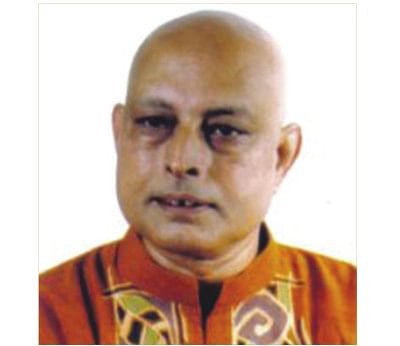Rabindra Sangeet: In the Tradition of Folk Music

Dr. Mridulkanti Chakrobarty
Starting from May 4, the five-day 22nd National Rabindra Sangeet Festival arranged by Bangladesh Rabindra Sangeet Shilpi Sangstha (marking the 150th birth anniversary of Rabindranath Tagore) ended yesterday at Shawkat Osman Memorial Auditorium, Central Public Library, Shahbagh in Dhaka.
On the second day (May 5) of the festival, Dr. Mridulkanti Chakrobarty of Dhaka University delivered a speech, titled “Rabindra Sangeet: Composed in the Tradition of Folk Music”.
In a speech full of allusions, excerpts and references, Dr. Chakrobarty elaborately discussed how folk tunes (baul, shari, bhatiali and karma sangeet etc) have inspired Tagore's songs.
“The opulent collection of Rabindra Sangeet is one of the most treasured heritages of Bengal. During his stay (1890-1901) in East Bengal (now Bangladesh), for overseeing his family estate, and later with the establishment of Shantiniketan at Birbhum (West Bengal), he observed rural life closely and was thoroughly impressed with the folk tunes. Rabindranath himself termed many of his songs as 'Rabindra Baul-er Gaan',” said Dr. Chakrobarty.
“Tagore was a man of diverse taste and this reflected in his music as well. He experimented with tunes throughout his life. Aside from his numerous fundamental compositions, his music drew inspiration from Hindustani classical, western classical and folk tunes. The distinct features that we find in kirtan and baul songs are expressed in Tagore's compositions in a refined way,” he added.
For Tagore, the concept of universal love was not necessarily derived from his western education; rather it spontaneously generated from the heart of rural Bengal, through the songs of bauls and fakirs. According to Dr. Chakrobarty, the poet pointed out, with wonder, “The tall talks of universal love is nice to hear from foreigners, but songs about it by the beggars going from door to door -- why do those fail to reach our ears?”
“Experts say that Tagore's spiritual quests were first framed in his creation 'Geetali-Geetimalya'. He wrote a play, 'Raja' at that time, inspired by the baul philosophy. He also enacted the role of a blind baul in his play 'Phalguni',” said the speaker.
“While looking after his estate in Rajshahi and Kushtia, Tagore met bauls, fakirs and vaishnavs. He published 20 Lalon songs in the monthly 'Probashi'. Tagore published a Baul Gagon Harkara song, ‘Aami Kothaye Pabo Tarey’. Our national anthem, ‘Amar Shonar Bangla’, was based on the tune of that song,” continued Dr. Chakrobarty.
“In the Puja Parjaye (devotional segment) of 'Geetobitan', Tagore included 13 songs generated from baul thoughts: ‘Aami Kaan Petey Roi’, ‘Aami Tarey Khujey Berai’, ‘Shey Je Moner Manush’, ‘Amar Praner Manush Achhey Praney’, ‘Tomar Khola Hawa’, ‘Aami Jakhon Chhilem Ondho’, among others. Many of his songs from different segments, like Swadesh and Prokriti, were inspired by the bauls. ‘Gram Chhara Oi Ranga Matir Poth’, ‘Boshontey Ki Shudhu Kebol’, ‘Mati Toder Daak Diyechhey’, ‘O Amar Desh-er Mati’, ‘Banglar Mati Banglar Jol’, ‘Je Tomaye Chharey Chharuk’, ‘Sharthok Janom Amar’ are brilliant examples of this,” the speaker said.
“In his book ‘Rabindra Sangeet’, Shantidev Ghosh mentioned that there are almost 200 Rabindra Sangeet composed in the traditional folk music style,” said Dr. Chakrobarty.

 For all latest news, follow The Daily Star's Google News channel.
For all latest news, follow The Daily Star's Google News channel. 



Comments